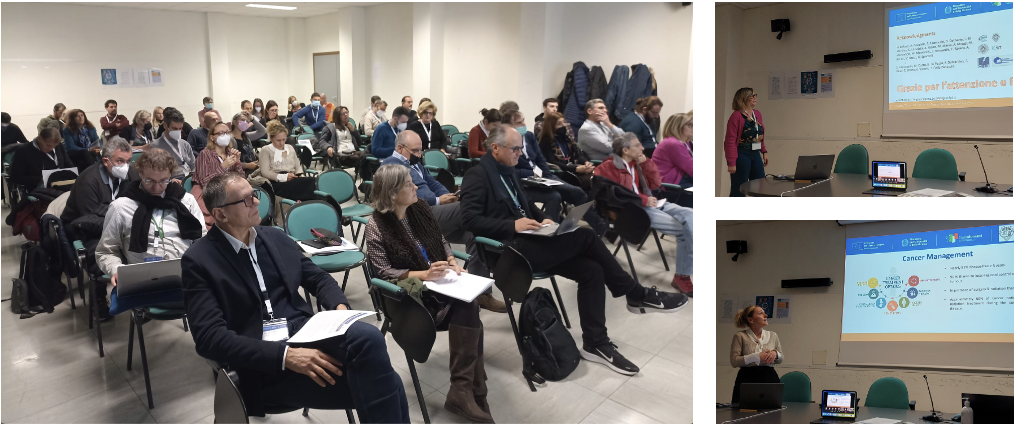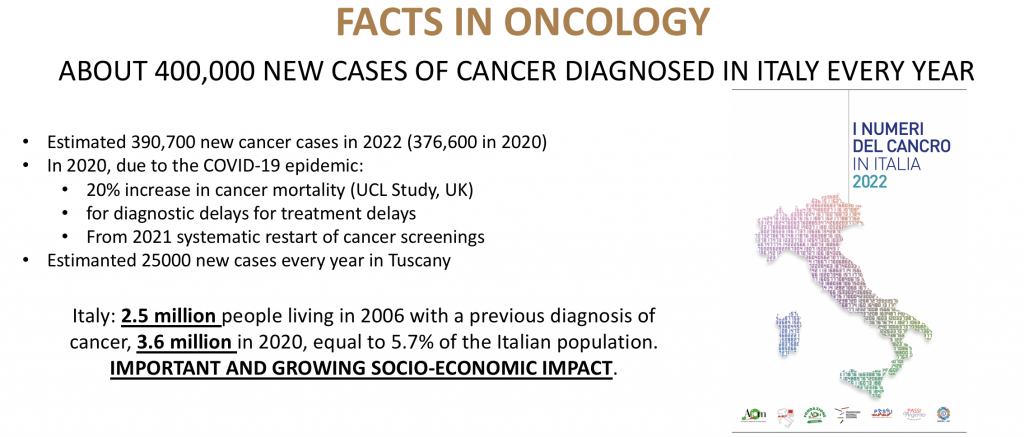The “Tuscany Health Ecosystem” (THE) is one of the eleven ecosystems nationally funded under the PNRR, the only one dedicated to life sciences. The goal of “THE” is to make Tuscany the “region of health”, directing research and companies towards the development of applications and the production of technologies dedicated to health and well-being. THE intends to respond to the innovation and training needs of the sector, enabling the consolidation of the regional ecosystem and strengthening its competitiveness on a regional, national and global scale.
For more information, refer to the official website https://www.tuscanyhealthecosystem.it/.

Spoke 1: Advanced radiotherapies and diagnostics in oncology
Spoke leader: CNR
Affiliated partners: UNIFI, UNIPI, INFN
With about four hundred thousand cases every year in Italy, oncological diseases have a huge social and economic impact and are a global challenge for scientific research and technological innovation. Treatment of tumors has specialized using different principles and approaches, reaching today very high levels of effectiveness and complete recovery. Oncological radiotherapy is used in more than a quarter of all cases and in 40% of curable cases of radiosensitive tumors to eliminate or to reduce the size of the tumor before or after surgery, to kill residual tumor cells. The definition of treatment plans for cancer subjects has been inspired by the guiding principle of gradual administration of the therapeutic dose, through several sessions distributed over time. This principle is still considered a key element in controlling the cost-benefit ratio. Recent studies show that this guiding principle may not be optimal. The so-called “FLASH effect”, already anticipated in studies in the 1960s and recently emerged with overwhelming evidence in preclinical and clinical studies, suggests that the administration of the therapeutic dose in a single session and in very short times (< 200 ms and with a ultra-high dose rate ≥40 Gy/sec (ultra-high dose pulse – UHDP) would lead to equivalent effects on the tumor, but much reduced damage to healthy tissues, allowing to widen the therapeutic window. If translated to the clinics, this effect could lead to an increase in both dose and volume of treatment, enabling radiotherapy to be effective also against tumors characterized, to date, by unfavourable prognosis. Also, the duration of the treatment would be reduced to one or very few sessions compared to the many sessions of conventional radiotherapy. This is a potential paradigm shift that could lead to a revolution in radiotherapy, with great clinical, economic, and social benefits.

At present, the radiobiological mechanisms responsible for the FLASH effect have not been fully understood. Also, translation of this effect to clinical practice requires ionizing radiation with unprecedented intensity and spatio-temporal structure, beyond the capabilities of current industry standards. A global effort is ongoing to provide new devices that are now being validated for biomedical use. FLASH dose-rates can now be achieved by modified laboratory electron accelerators and, recently, by upgraded Intraoperative Radiation Therapy devices (e.g., Electron Flash LINAC) capable of delivering multi-MeV beams with high current, for preclinical studies and in view of dermatologic radiotherapy. New devices are being developed for the delivery of Very High Energy Electron (VHEE) accelerators, with energy between 100 MeV and 250 MeV, which are primarily being considered for the treatment of deep-seated tumors. Novel, laser-based accelerators can inherently deliver ultrashort beams of ionizing radiation, including VHEE beams, with a unique instantaneous dose-rate largely exceeding 1E10 Gy/s and high dose per pulse.
Contacts:
Leonida A. Gizzi (Spoke 1 – Leader)
Donata Fornaciari (Spoke 1 – Project Management)
